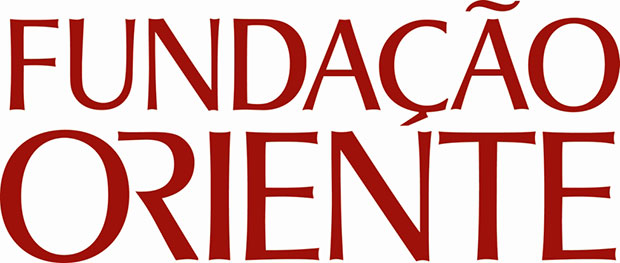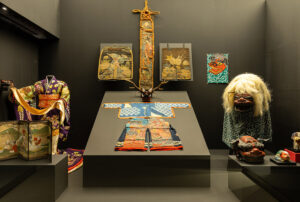
Enhance the visitor experience by introducing interactive elements that bring exhibitions to life.
Create audiovisual effects that respond to visitors’ movements as they progress through the exhibition.
Increase visitor numbers and improve visitor satisfaction, while piloting technologies that can be used more widely in future exhibitions.
About
Fundação Oriente
Founded in 1988, Fundação Oriente is a not-for-profit institution that owns and oversees the Museu do Oriente in Lisbon and Convento da Arrábida, Portugal, and maintains delegations in Macao, India and East Timor. Its mission is to pursue cultural, educational, artistic, scientific, social and philanthropic goals to treasure and continue the historical and cultural relations between Portugal and the East.
The world’s great museums are central to our understanding of our history, our culture and the world around us. Yet in the digital age, where information about almost any subject is available instantly on our mobiles, it’s easy for people to overlook the value of visiting exhibitions and seeing artifacts with their own eyes.
That’s why institutions like Fundação Oriente, which owns and operates the Museu do Oriente in Lisbon, Portugal, have realized that their approach to designing exhibitions needs to change. Pedro Krupenski, Advisor to the Board of Directors of Fundação Oriente, explains: “In the past, visitors had a purely passive and contemplative relationship with museum exhibits. But today, they expect to play an active part in their own experience.”
He adds: “Interactivity is the key. The visitor becomes part of the exhibition, so it’s a much more immersive experience. And by sparking their imagination, we get them to engage more deeply with the exhibits and learn more about Portugal’s cultural engagement with the East.”
To mark the 480th anniversary of Portuguese-Japanese cultural relations, Museu do Oriente decided to launch a major new exhibition. “Japan: Festivities and Rites” would display more than 1,600 pieces of Japanese art and explore how the country’s traditions and rituals have evolved since the first Portuguese explorers arrived in Japan in 1543.
“We knew that interactivity would be essential to help visitors experience the exhibition with all their senses,” says Sofia Lopes, the Vice-Director of Museu do Oriente and this exhibition’s curator. “We wanted to bring them the sights, the sounds, and even the scents they would encounter if they were actually participating in traditional Japanese ceremonies.”
The museum had hosted interactive exhibitions before, but not on this scale. “Japan: Festivities and Rites” would occupy an entire floor of the museum for 18 months and aimed to attract more than 150,000 visitors. Creating a truly engaging interactive experience was a top priority — but with a tight budget and a timeframe of just five months, the museum needed to find the right partners to help turn its vision into reality.
“As a prestigious Japanese business and the head of the Portuguese-Japanese Chamber of Commerce, Hitachi was at the top of our list, and we were delighted when their team wanted to work with us,” says Sofia Lopes. “We also teamed up with a local university, Universidade Lusófona, who offered to help us with graphic design and animation for our interactive exhibits.”
The three organizations decided to base the interactive idea around the legendary Kappa — a mischievous Japanese demon, half human, half turtle — as an animated character who would pop up and interact with visitors as they walk around the exhibition.
To bring Kappa to life, the Hitachi team installed several Hitachi 3D Lidar Sensors at key points in the exhibition space. The Lidar technology captures a three-dimensional representation of the space in real time, which can then be analyzed to identify the presence, movement and even gestures of visitors as they pass in front of the sensor. All data from the Lidar sensors is GDPR compliant so no visitor images are collected or stored.
“In one scenario, as a visitor approaches, we trigger the projection of a short film that shows the Kappa chasing after an animated cucumber — the food that Japanese people traditionally offer to Kappa at festivals,” says Graça Viegas, Museum Technician. “It’s really wonderful to see how visitors react to it.”
In total, the team implemented three different scenarios in time for the launch of the exhibition — all featuring the Kappa.
“The most important thing was to get ready in time for the opening,” says Graça Viegas. “Hitachi came up with a project plan and a schedule that pushed us all to work together and deliver what we needed on time. Everything went very smoothly, and it was a real privilege to work with such an enthusiastic and technically well-prepared group of people.”


“We’re convinced that the interactive elements of the exhibition are encouraging more people to visit the exhibition,” says Sofia Lopes. “The investment in this project will more than pay for itself — not only in terms of increasing ticket sales, but also by giving visitors a memorable experience that will strengthen the cultural bonds between Portugal and Japan.”
Pedro adds: “This project is also a milestone in the digital and technological development of the whole museum. The technology and audiovisual design we’ve developed here, and the lessons we’ve learned in implementing it, will serve as a pilot for making future exhibitions even more interactive and engaging.”
And the story does not end there. As the exhibition goes on, the museum is continuing to work with Hitachi to develop additional interactive scenarios that can be deployed to enrich the visitor experience further.
“We owe a lot to Hitachi, and our relationship couldn’t be better,” concludes Pedro Krupenski. “From project leadership to technical expertise and software development, the whole Hitachi team was enthusiastic, proactive, knowledgeable and humble — and their positive attitude was contagious. We wish all our partners were like Hitachi.”
Visitors on the first day
Visitors expected in total


